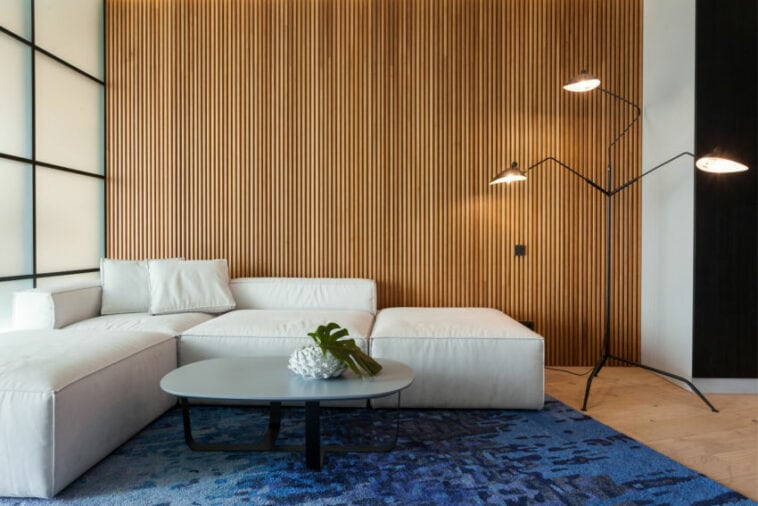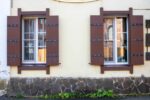This Post may contain Affiliate Links. Please read our Disclosure for legal jargon.
Wood wall paneling has become an increasingly popular style for both the interior as well as exterior space. They provide a classic look that has proved to be timeless and much loved for the aesthetic character it creates.
With a more modernized vibe to it, there are now different types of wood wall paneling options available. Contrary to popular knowledge, they are in fact quite easy to install!
Depending on why exactly you want wood paneling, it is important to choose the appropriate type based on the purpose.
So here are the many different types of wood wall paneling options you should get familiar with!
Outline
17 Types Of Wood Wall Paneling
1. Shiplap

The most notable feature of shiplap wood paneling is the flat boards with rabbet joints that overlap. When installed with care, shiplap wood panels fit snugly with one another.
The groove between each panel board creates a neat reveal that adds to the charming look of the entire fitting. They can be placed horizontally or vertically as you wish.
Shiplap wood paneling is more popularly used for exterior designing as it lends a crisp yet rustic vibe. This type of paneling is hence often used in modern houses or buildings.
Pros
- Lasts for a long time if installed and maintained properly.
- Prevents water leakage.
- Adds insulation.
Cons
- Not easy to maintain as it requires extensive cleaning.
- Deteriorates, rots, or leads to warping if not installed well.
2. Tongue-and-Groove
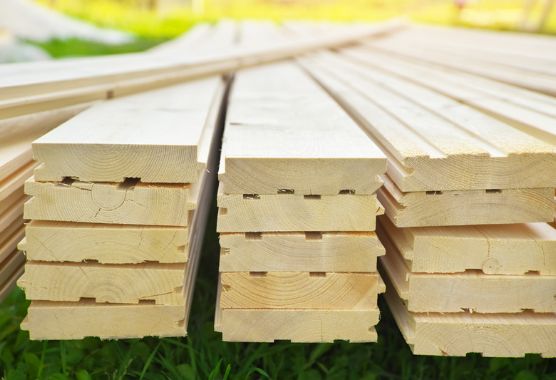
This type of wood wall paneling is quite similar to that of shiplap. What sets the former apart is that the boards here are interlocked by the tongue-and-groove joints rather than rabbets. It’s best to use wooden boards that have cuts on their sides, like grooves.
If the installation and fitting are done properly, it can be a snug fit that creates an overall neat and beautiful look.
The tongue-and-groove wood wall paneling is more popularly used for ceilings. Otherwise too, this type of panel fitting is quite attractive as it lends a certain character and intensity to the structure.
Pros
- The tight-fitting prevents dirt or dust from settling in between.
- High durability if installed properly.
Cons
- The installation process requires a lot of time.
- It can be quite expensive.
3. Wood Slat
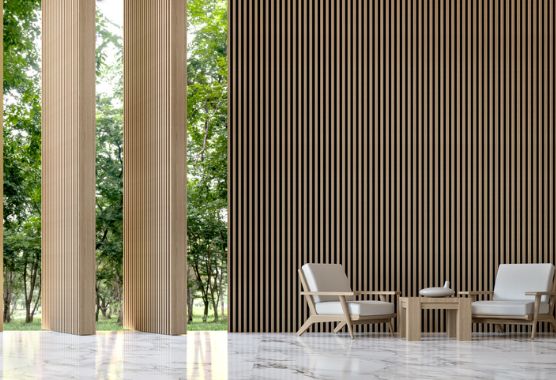
This type is quite similar to tongue-and-groove paneling with regard to its pattern. However, what makes the wood slat panels different is that the boards are not indented. The wood here is instead, raised.
The wood slats generally used for this paneling, are vertical pieces of wood. It can be fixed from the ceiling When installed with precision and care, this type of paneling can lend a feeling of depth as well as character.
Wood slats also are quite well-suited for creating that stylish yet rugged kind of look.
Pros
- It can be pretty durable if installed meticulously with proper care.
- Not too expensive.
Cons
- The installation often requires a lot of time.
- Requires effort to be maintained with attention.
4. Pallet Wood
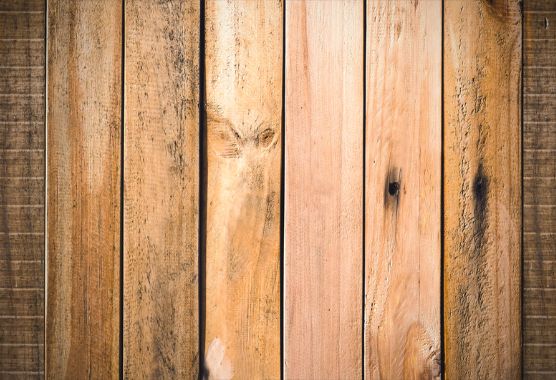
Pallet wood paneling is also called barn wood paneling. The highlight point of this type is that it uses wood planks with a rough finish. In this sense, this style of paneling embraces any irregularities, knots, or flaws that the pallets may have.
It is more popular to use this in an informal setting rather than in a formal one. This kind of paneling is quite suitable for bringing about a farmhouse kind of look.
Put together, the various features of pallet wood paneling can create a rugged yet warm and inviting atmosphere.
Pros
- Cost-effective method.
- Tools and materials required are easily available.
- Installation is relatively less difficult and not so time-consuming.
Cons
- This style is not really suitable for a formal setting.
5. Natural Wood Planks
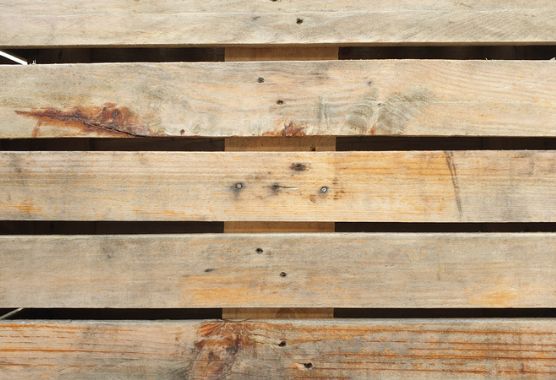
As the name suggests, this type of paneling lays emphasis on the natural aspect. In the case of this paneling, it is important to choose the right kind of wood for the planks.
The installation process calls for precision and attention. It is also advised to make use of a tool to ensure that the planks are well-leveled and smooth. This will make the fitting process much easier with great finishing.
The natural wood plank paneling can therefore create a rough yet snug, earthy, and comfortable kind of ambiance.
Pros
- It can be pretty durable if installed with proper care.
- Paneling work is relatively cost-effective.
Cons
- The installation process has to be meticulous. It requires a lot of time and effort.
6. Board-and-Batten
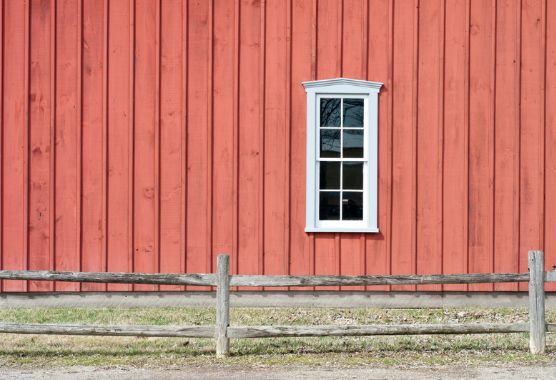
Board-and-batten wood wall paneling is a style that is widely popular. In this type of paneling work, one makes use of wide boards as well as battens which are thin.
When fit together properly, it forms a design that has a unique and refined three-dimensional aspect to it. This kind of paneling also allows for a neat look by concealing the seams of the wood boards.
In the case of board-and-batten panel work, it is possible to achieve the style you’re aiming for depending on the finishing of the wood.
Pros
- Can last for a long time if properly installed and taken care of.
- Low maintenance cost and requirements.
Cons
- May be expensive depending on the standard of materials used.
7. 3D Panels
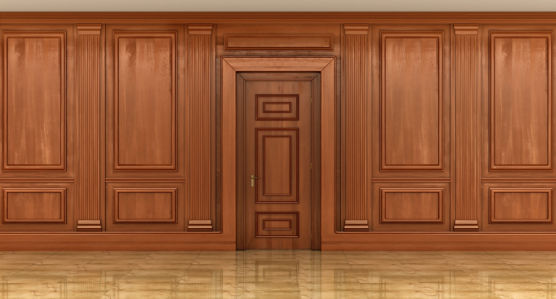
This style is quite different from most other wood paneling works that have a regular layout and pattern.
There is an uneven aspect to the breadth as well as thickness of the boards used for this wood paneling style. It creates a uniquely non-uniform design that is quite striking and attractive.
Furthermore, the installation is not quite difficult and can be done easily in no time. So the 3D wood paneling technique might be just your cup of tea if you’re looking for something out of the ordinary, yet stylish.
Pros
- The installation process is quite simple and easy. Not time-consuming.
Cons
- Dust and dirt collect quickly on the ledges.
- Requires time and effort to maintain. Has to be dusted and cleaned on a regular basis.
8. Plank Wall
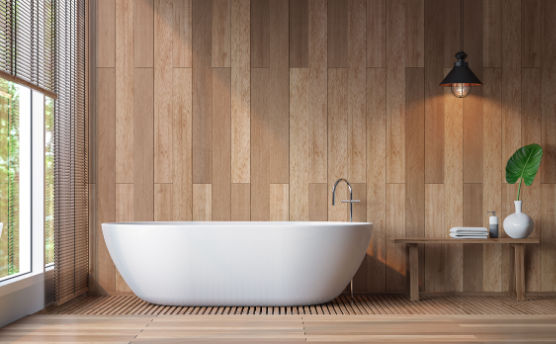
This type of paneling work has a cozy and rustic yet elegant vibe to it. Hence, the panels used in this style are most often of natural or mild colors.
Plank wall kind of paneling is quite suitable for the laid-back kind of setting in most types of houses. Depending on the type of wood used, it is possible to customize the style, design, and layout of the work according to one’s preference.
The dimensions, kind of finishing of the panels as well as their arrangement can be done in distinct patterns as desired.
Pros
- Cost-effective depends on the quality of materials used and the amount of precision needed.
Cons
- Requires time and effort to figure out the pattern layout, arrangement, and spacing.
9. Vertical
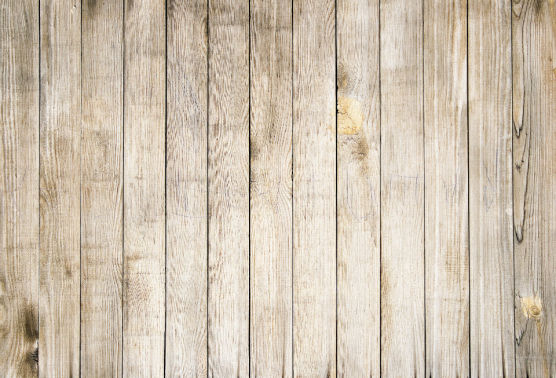
This paneling type might be right up your lane if you are looking for more of a 1970s retro vibe. These vertical wood panels can even be used to give an aesthetic renovation to the walls of a modern home.
The panels used in this style are almost always made out of real wood. Owing to their thinness, it is relatively easier and quite simple to install them than most other paneling works.
Moreover, since the panels are pre-finished, it is possible to paint them according to one’s preference to suit the decor.
Pros
- Relatively quite easy to install as it does not require too much time and effort.
- Easily available and cost-effective materials.
Cons
- Durability may be cut short if not maintained properly.
10. Reclaimed Wood
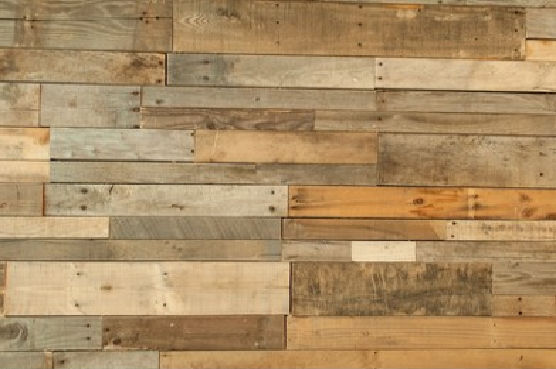
Reclaimed wood paneling technique has recently become quite popular, for its stylish features. Often used to recreate the interior space, this type of paneling gives a distinct finish to the walls. This further lends a rich value to the wood.
One of the biggest perks of this method is that it allows you to stain, paint and customize the panels according to your preference or to match the decor.
Although this kind of paneling is mostly seen in rural areas, it is becoming a well-known technique in urban and contemporary houses too.
Pros
- Quite strong by nature and has long durability.
- The installation process is quite easy and does not require much time and effort.
Cons
- Materials required are likely to be more expensive.
11. Flat Panels
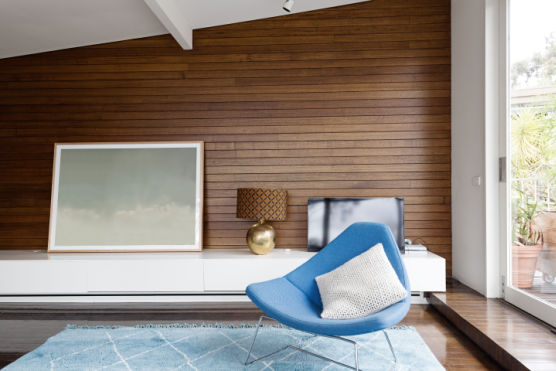
This is a rather simple type of paneling work that has been around for quite a long time. Even now it continues to be quite popular.
Flat paneling is known for creating a refined and neat look that is especially suitable for formal or modern settings. Yet, the minimalist style also gives off a warm and graceful vibe that emphasizes the other elements in the space.
The unique texture and finishing of flat panels can further add to give a rich quality to the walls of your interior space.
Pros
- The paneling work is quite simple and relatively more cost-efficient.
- Panels can be customized to an extent.
Cons
- Does not allow for elaborate detailing or complexity in appearance.
12. Knotty Pine Cabin
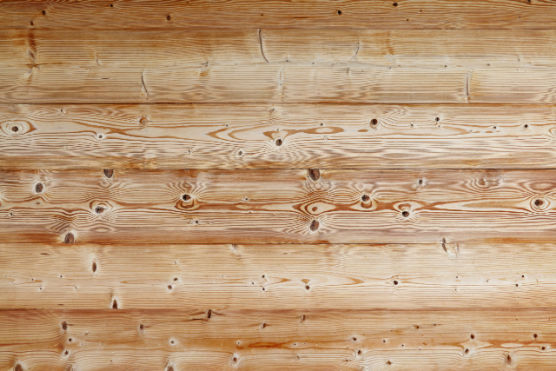
As the name suggests, this kind of paneling work is quite suitable if you’re looking to create a cottage or log cabin kind of ambiance. The panels used in this style are of different types as well as distinct textures.
One of the biggest advantages of knotty pine cabin paneling is that it can be done on both the interior as well as the exterior space. A wood floor can further accentuate the cozy and rustic vibe created by this type of paneling.
It is also possible to stain the panels as per your preference, to suit the decor color or theme.
Pros
- Materials and tools required for the paneling work are easily available.
- Budget-friendly to a great extent.
Cons
- The installation process is quite easy but might require a lot of time.
13. Beadboard
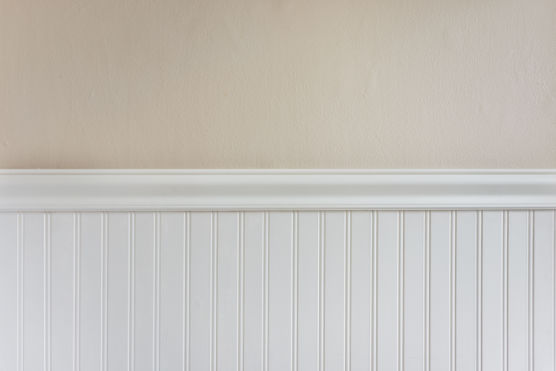
The typical beadboard paneling work is made up of narrow wooden boards, with a thin groove or “bead” between each of these wood strips.
This kind of paneling is more popularly used for something known as wainscoting. In this particular style, the beadboard work is done only on the bottom three to four feet of the wall.
It is possible to either install the boards individually or to go about it in a much easier way by using sheets with a beadboard pattern. These sheets are easily available in different sizes and can also be stained or colored as per your wish, to match the decor.
Pros
- The size and color of panels can be customized based on preferences.
Cons
- Can be difficult to maintain and clean as dirt and dust collect easily.
- The installation process is quite time-consuming and requires immense effort.
14. Chevron-style
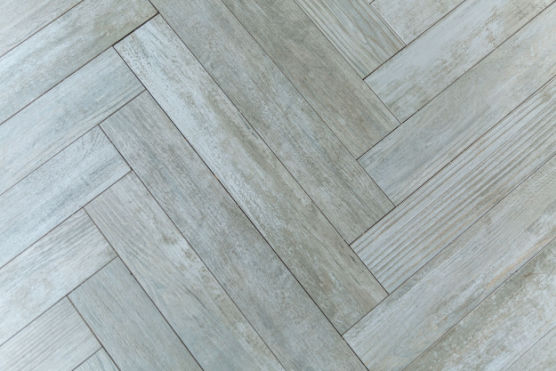
In the Chevron style of paneling, the boards are usually made out of natural wood. As the name suggests, this paneling is characterized by its unique and attractive chevron pattern of the work.
Here the panels are cut at specific angles and arranged to form a V-shaped design. The boards used are mostly available in varying shades of grey.
Mostly used in interior spaces, this type of paneling can give a certain sharpness to the appearance of the room. If you are looking to create a sophisticated yet stylish vibe, then the Chevron style of paneling work is a great choice.
Pros
- Not quite difficult to maintain.
- Good durability.
Cons
- Does not offer much of an option with regard to color.
- Can take a long time to install as the panels have to be cut angularly.
15. Raised Panels
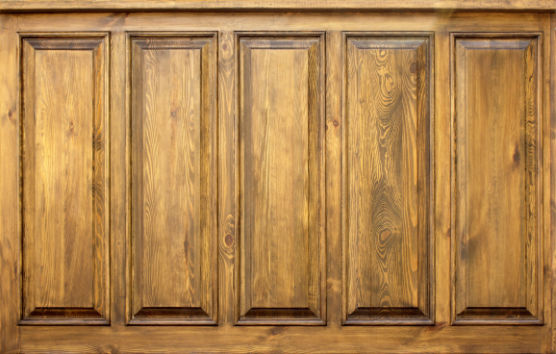
As the name indicates, in the raised wood paneling method, the boards are fitted at an elevated level. It is then framed by means of rails as well as by molding.
The raised panels used in this technique are readily available in different styles. It is also possible to further customize these panels by painting them to suit the surrounding wood decor.
This kind of paneling work is particularly suitable for formal spaces such as the library, office, etc. as its intricate features create a uniquely attractive and classic look.
Pros
- Can last for a long time if maintained properly.
Cons
- The intricate and elaborate style of paneling can make this technique quite expensive.
- Not quite suitable for an informal space or setting.
16. Herringbone
Needless to say, in this type of wood paneling, the boards are arranged in the pattern of a herring fish’s bones. The angular characteristic of the herringbone style of paneling has made it a quite popular technique over the years.
The interlocking element of the design creates a uniquely dynamic yet rustic vibe that can change the overall look of the space.
The rectangular panels used for this technique are most often made of reclaimed wood and are available in a wide range of colors. The herringbone style is known to work incredibly well in the informal spaces of a home.
Pros
- Can be a DIY project if you can cut neat angles into the panels.
- The installation process requires relatively less time.
Cons
- Need to be maintained with care and cleaned on a regular basis.
17. Diagonal Slat
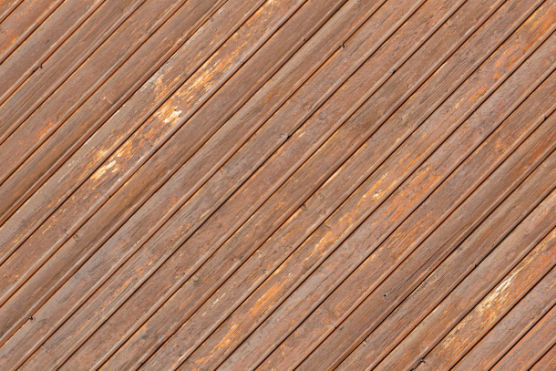
This is a more contemporary style of wood wall paneling. It uses textured wood panels consisting of diagonal wooden boards that are most often diagonal. These sections can be arranged to form simple yet distinct patterns.
Although it is also quite suitable for modern settings, the diagonal slat paneling is more popularly seen to be used in informal spaces such as a home.
The unique positioning of the panels and the layout in this style are what often catch the eye of most people. You can also paint or stain these diagonally fitted panels in colors that complement the decor.
Pros
- The longevity of the panels can be extended with proper care and maintenance.
- Cost-effective.
Cons
- The installation process may require time and effort as the wood panels have to be fitted with precision.
Most of these wall panels can be installed by yourself. You can even customize them by painting or decorating. These different wood wall panels can serve a wide range of purposes, so it’s important to choose accordingly.

